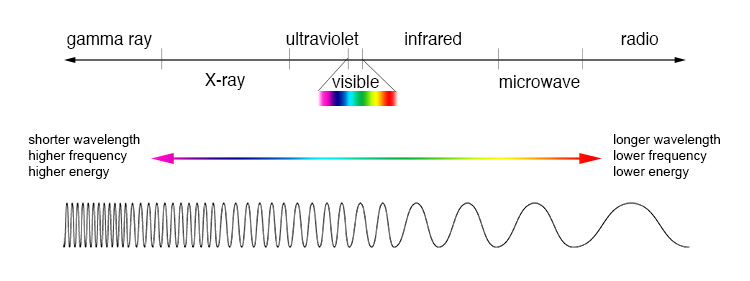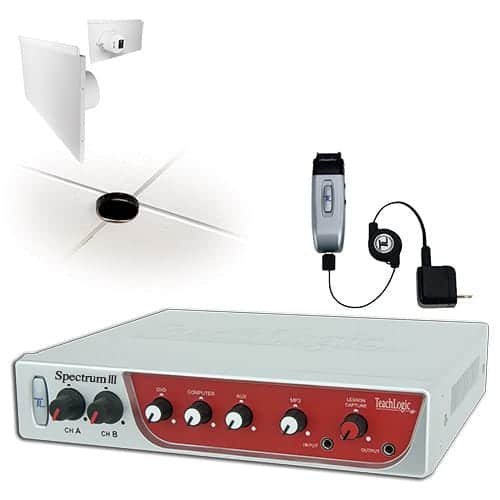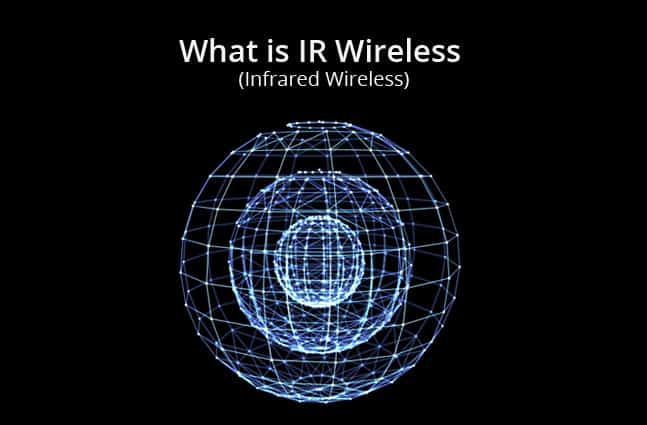What exactly does Infrared Wireless (IR Wireless) mean and how does it exactly work?
In a nutshell, Infrared Wireless is the process of sending data and communications wirelessly over an infrared connection.

If you look at the electromagnetic spectrum pictured above, infrared is between visible light and microwave.
The wavelengths of infrared are slightly longer than those of red light.
The shortest wavelength of the infrared spectrum borders visible light/ultraviolet and the longest wavelength borders microwave.
IR wireless is used for short and medium-range communications and control.
Unlike some systems that operate on a “line-of-sight mode”, meaning there must be an unobstructed straight line through space between the transmitter and receiver, infrared wireless can function when the transmitter and receiver are not directly visible to each other.
A television remote control box is a great example of how infrared wireless technology works.
The box does not have to be pointed directly at the set, they just have to be in the same room or just outside the room with the door open.
Other examples of how IR wireless technology is used include home entertainment control units, wifi monitoring tools, line of sight laser communication, cordless microphones, headsets, modems, printers, robot control systems, remote control systems, and more.

Infrared wireless cannot pass through walls like radio-frequency and some might view this as a disadvantage however, this makes infrared wireless more private and secure.
Radio frequency wireless can travel through walls making it easier for someone to connect or gain access to it – as Opposed to 802.11 Wireless that sometimes is prone to congestion and interference.
Infrared wireless communications or control are generally not possible between different rooms in a house or building, or between two buildings in the same area, unless they have facing windows that are within range.
Someone from the next room over cannot gain access unless the doors are open and if they are in a separate building, they certainly will not be able to gain access.
If you have a well engineered line-of-sight infrared communications link, it can be very hard for someone outside of your network to connect or eavesdrop, making this a surprisingly secure option.
Keep windows and doors in mind when setting up this type of communication to ensure the connection is secure.
IR Wireless FAQs
What is IR wireless?
IR wireless technology is a wireless communication technology that uses infrared light to transmit signals between devices.
How does IR wireless work?
IR wireless works by using an infrared transmitter to send signals in the form of light to an infrared receiver, which then converts the light signals into electrical signals that can be interpreted by a device.
What are some common applications of IR wireless technology?
Common applications of IR wireless technology include remote controls, wireless headphones, and wireless computer peripherals.
What are some benefits of using IR wireless technology?
Benefits of using IR wireless technology can include reduced interference from other wireless signals, improved battery life for devices, and improved security due to the line-of-sight nature of the communication.
What are some common challenges associated with using IR wireless technology?
Common challenges associated with using IR wireless technology include the requirement for line-of-sight communication, the limited range of the technology, and potential interference from ambient light sources.
Can IR wireless technology be used for virtual reality applications?
IR wireless technology can be used for virtual reality applications by using devices such as hand controllers or headsets that use IR signals to communicate with a computer or other device.




